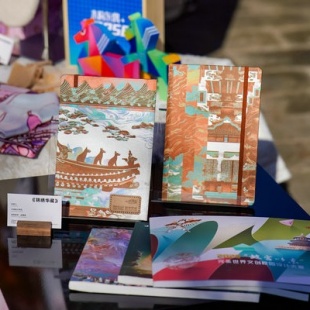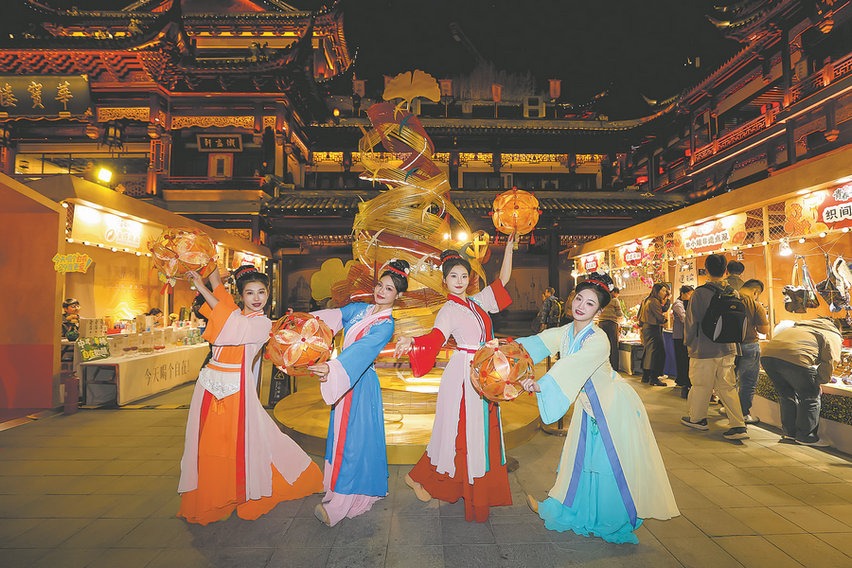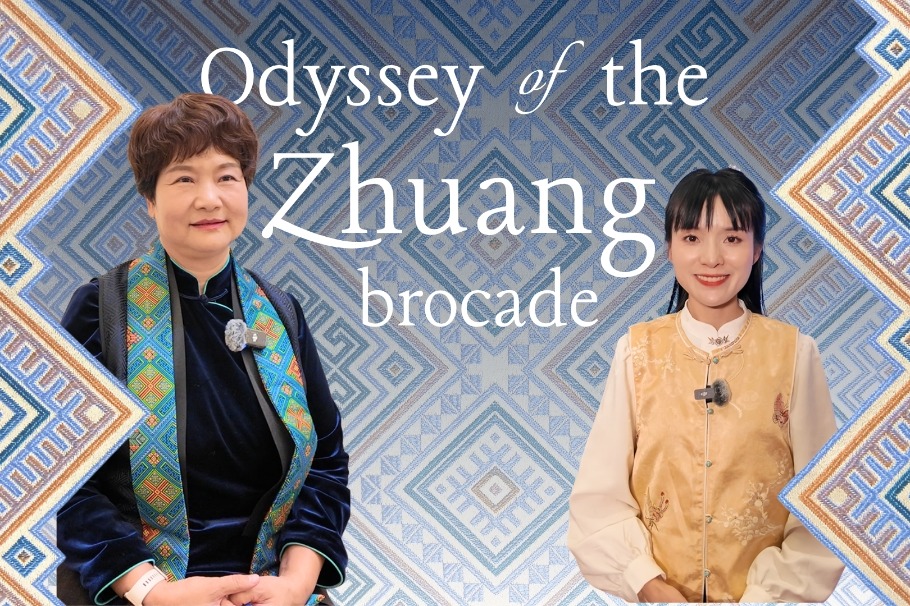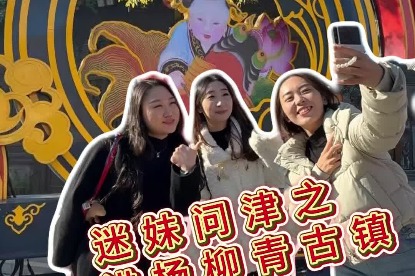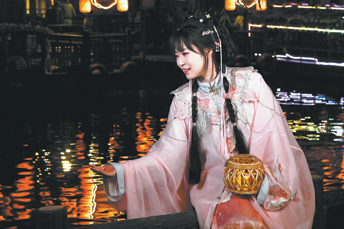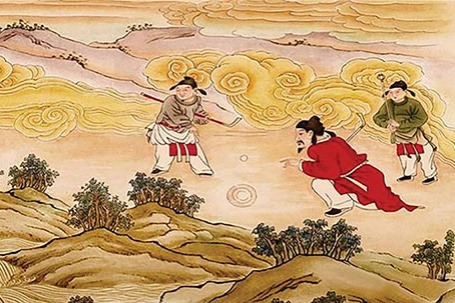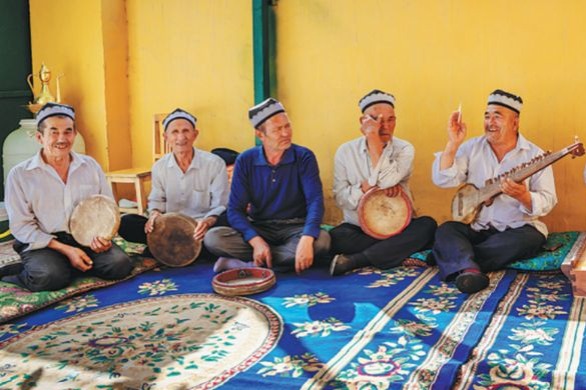Tradition beats with a modern pulse
Emerging designers reinterpret cultural heritage through innovative projects, Yang Feiyue reports.


The 21-year-old sophomore won a gold prize for her gift package featuring silk scarves, postcards, and folding screens that were inspired by the Palace Museum.
A digital media major, Zhang shifted from simple admiration of the landmark to a deeper interpretation of its charm.
"I studied elements of the Palace Museum, which deepened my understanding of why they existed and how to express that meaning through modern design," Zhang says.
Using AI as an exploratory tool, she refined designs manually to ensure cultural accuracy.
She also considered materials and manufacturing processes from the start, making the shift from digital concept to physical product unusually smooth.
"Seeing them in my hands felt surreal," Zhang recalls.
Gao Yang, deputy director of the cultural and creative development department at the National Art Museum of China, was impressed by Zhang's work, not only for its visual transformation of Palace Museum imagery, but also for its systematic approach.
It is not a simple collage of Palace Museum elements, he emphasizes.
"Through 17 detailed drafts that reinterpret traditional motifs, from flying eaves and decorative painting to classical garden structures, the creator translated these cultural symbols into everyday cultural-creative products," says Gao, who has served as a judge of the "Heart of Beijing" competition for three consecutive years.
This year's winning works show a noticeably more sophisticated approach to the contemporary reinterpretation of cultural symbols.
Gao believes it reflects two emerging strengths among young Chinese designers — a precise grasp of the spiritual essence of traditional culture and the confidence to express it through modern aesthetics.
"Their creativity is shifting from surface-level grafting to deeper structural reconstruction, and that shift is a direct expression of growing cultural confidence," he says.
In the AI track, Gao has observed interdisciplinary collaboration.
He still vividly remembers details of the award-winning AIGC short film Voices of the Axis that used voiceprint visualization and data-driven techniques to transform "silent" historical sounds into tactile, emotionally resonant imagery.
"Yet, technology should not replace creativity, and its role is to expand expressive possibilities," Gao emphasizes.
While AI can quickly generate stylistic variations and visual directions, he stresses that designers must focus on calibrating emotional tone and cultural logic.
In his view, the key to integrating art and technology lies in applying humanistic thinking to guide digital tools and avoiding the pitfall of innovation that is merely technical showmanship.
Yi Di, senior vice-president of Perfect World, says the competition has been aiming to make China's traditional culture resonate in contemporary life.
"Our original intention was to find new platforms and new methods to creatively transform and innovatively develop the cultural treasures hidden in museums, embodied in ancient architecture, and carried through centuries of intangible heritage," Yi says.
"Young people are the source of modern creativity. To combine that creativity with traditional culture, we need a bridge, a link, a platform," Yi adds.
Yi also highlights the competition's growing international impact.
Several award-winning works were featured earlier this year at the Beijing London Short Film Festival organized by the British Department for Business and Trade, and Oriental Odyssey Digital Art Exhibition in London, marking the event's first step onto the global stage.
"People were genuinely amazed by the power of Chinese culture — especially after it becomes digitized," Yi observes.


